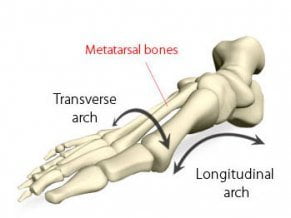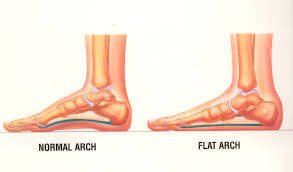Blog
 So spring has finally arrived after a cold and very wet winter. Like most, you have likely become more sedentary and stiff than in past years. Here are 5 simple tips to get you back into shape without causing new injuries:
So spring has finally arrived after a cold and very wet winter. Like most, you have likely become more sedentary and stiff than in past years. Here are 5 simple tips to get you back into shape without causing new injuries:
1) Take it slow and steady! Better to have a few shorter or slower workouts rather than overdo it and hurt yourself. Check out runkeeper a cool and free app for your smartphone.
2) Fitness and Health are 2 different things. Now is a great time to clean up your diet and take high quality nutrition to enhance recovery and easily shed some pounds too. Stay away from Gluten, sugars and refined products. Good veggies are now available from local markets and get some good quality fats in your diet too.
3) Most people who injure themselves already have something out of balance before they in fact get “injured”. Plenty of tennis elbows, low back spasms, knee and foot issues are from prior imbalances that flare when exercise is started. While I am biased, see a Professional Applied Kinesiologist or health oriented provider to clear out some underlying issues. This is especially important since many injuries occur do to imbalances in other systems or parts of the body.
4) Drink Water! So many health issues can be resolved just from being properly hydrated. Graze drink water in between meals. Try and get 1 Qt per 50 pounds of body weight. Stay away from soda’s including the horrible “diet” versions. Cold dry air causes people to not sweat and likely dehydrate without even knowing it.
5) Get sleep! We recover and heal when we sleep. As you increase your exercise you will need more sleep to recover. Many cyclists, tennis enthusiasts and similar multi-hour athletes usually need about an extra 1.5 hours of sleep to recover.
Be safe, Have Fun and use that one thing we seem to always forget “Common Sense”
First off, the mainstream everything continues to use the term gluten so I will as well. However, gliadin is actually a type of gluten but not all of them. Therefore the correct term would be to say you are gliadin free. But alas, i digress. The answer to this question is YES. The statement should not be are you gluten sensitive rather “how much” gluten sensitive you are. Two very good books are out right now that go into good depth on how big of a problem Gluten is, why it is, and what all it is doing to people. The key is not to just remove gliadin from the diet. You will just replace it with other refined products and likely more sugar/carbs. It needs a total shift in diet away from the style of foods that are made with Gliadin.
Why Isn’t My Brain Working?: A Revolutionary Understanding of Brain Decline and Effective Strategies to Recover Your Brain’s Health
Grain Brain: The Surprising Truth about Wheat, Carbs, and Sugar–Your Brain’s Silent Killers
Humans have been around how long? Whether you believe we have been here a few thousand years or hundreds of thousands of years, we have been doing one method for getting around since the beginning: We walk. Yet it is amazing how many people do not know how to walk!
At a conference many years ago, Dr. David Leaf stated quite perfectly, that you can fix a person’s structural problem but if they do not walk correctly, they will walk themselves back into that same or another problem. Everyone should do some serious thinking about their walking.
People frequently ask, “Which exercise is best? Water aerobics? Swimming? Cycling? Elliptical?” To me the answer is simple: humans walk. Walk properly and you can literally walk yourself to health. On the other hand, if you have problems with your walk (gait), you will literally walk yourself into problems.

Going on a trip? Let’s say sightseeing in NYC. You dress in comfy clothes and shoes. You will probably walk many blocks without even thinking about it, and over the course of a long day you might walk 8-10 miles. Think about it: That distance is somewhere between a 10k race and half marathon. Would you choose to wear those shoes for that distance? One of the iconic images of the dot com era is CEOs and other white-collar types wearing sneakers to work. Rethinking footwear conventions is still a smart idea. I have had countless women defend that their profession requires high heels, etc. In fact in any style there are good and bad choices.
Here are a few of other benefits people may not realize about walking. It helps every part of your brain, from balance, to cross cortex communication, and even emotions and eyesight. It helps balance hormones, blood sugar and stimulates a good immune system. Additionally when you walk properly it is one of the best activities to loosen up your spine itself. So many people say they “hold their stress” in their shoulders when in fact it is that they walk wrong and breathe wrong.
The best starting point I have learned was people should walk 10K -12K steps per day. This equates to about 4 miles. Therefore all you need to do is walk about 45 min per day and the rest of your day will likely get you to the goal. For most people a good gait is about 16-18minute miles). I recommend families take a walk around dinner time for 20-30 minutes. It is good for everyone’s health, a great way to connect with your children and gets us off of the electronics we are obsessed with. Then on a weekend day take a much longer walk. Runkeeper is a great free app that tracks a walk and even maps it and estimates calories burned.
So what should you wear? For some help deciding, read my blog on shoes and gait.
Want to open up a can of worms? Discuss shoes and orthotics with professionals. It quickly will devolve into a classic Budweiser “Tastes great, Less filling” commercial. My answer to the debate: It depends.
Some people need orthotics; some people will be harmed by them; some people should be barefoot and others should never be barefoot. How do you know which you are?
Where do foot problems begin? The old “Nature/Nurture” debate again… I have had the privilege of knowing three generations of people with bad feet. Amazingly, grandma had ugly flat feet that were merely an older version of her grandson’s feet. Definitely something genetic was going on! But are our feet doomed by our genes? Not necessarily.
You can alter many genetic abnormalities through proper training. Here’s an example: Bunions. Bunions develop because the abductor muscle that is supposed to pull the big toe out to the side either is not there or is rudimentary (not developed properly); Nature or genetics.
Muscles pull bones and, over time, the absence of muscle will distort skeletal structure. The big toe, which is used every day, will alter due to muscle imbalance. So, if you can recognize a rudimentary muscle in a child’s foot and develop it, you can make that muscle normal and avert future problems. If you have bunions and your child does not, read my article on how to fix them before it is too late.
So, what should you do about shoes and orthotics? It depends. Let your children walk barefoot as much as possible especially if they do not have very flat feet. If you want to protect their feet, have them use sock or buffers without “support”. Walking from an early age will develop their arches and feet muscles and they will be able to walk easily on almost any surface.
For adults with decent feet (not very flat or very high arches), I recommend going barefoot as frequently as possible and use low profile shoes. For adults with high arches, I think high heels and other shoes are usually okay, but do not wear orthotics. (Why wear an orthotic, which boosts the degeneration of your foot’s structure into a higher arch?) For adults with flat feet I believe orthotics can help and are sometimes very necessary. However, recognize we actually have three arches in our feet. The foot is very similar to the hand; think of the many positions your hands can take while doing a push up. The most important and most overlooked arch is the metatarsal or transverse arch.  The majority of Orthotics offered tends to limit support to only the longitudinal arch, thus further weakening the others. If you have medium arched feet or if you are young or athletic, I recommend that you do not use any support and select a no-low impact shoe.
The majority of Orthotics offered tends to limit support to only the longitudinal arch, thus further weakening the others. If you have medium arched feet or if you are young or athletic, I recommend that you do not use any support and select a no-low impact shoe.
Here is a good source for more information on low profile shoes
http://runblogger.com/2010/07/runbloggers-guide-to-minimalist-running.html
How cool is modern technology? Awesome! But don’t forget the Law of Untended Consequences; with advances come certain other realities we may not be aware of immediately. We live with cell phones and laptops, wanting a “signal” all the time, yet we completely ignore the overwhelming data that radiation and the massive increase in wireless signals adversely affects the body. But what can you do? So, let’s chat about a different new technology: Dry-fit clothing.
If you engage in any type of physical exercise, no doubt you have worn a dry-fit shirt. If you think the shirts are great, just wait until you try the underwear! This amazing bit of modern technology, however, has its unintended consequences, too. I have seen several patients with unexplainable skin outbreaks that were resolved when they stopped wearing dry-fit clothing. Am I saying get rid of your dry-fit stuff? Not at all. I am saying if you have a sudden skin reaction, question the possibility that your new clothes, a chemical reaction from your detergent, or a combination of both is the cause. This is especially common for woman in the chest and décolleté. If I’ve heard it once, I’ve heard it a thousand times: “The cause of the problem can’t be [fill in the blank] since I’ve been using that for years.” Consider, however, that it has deteriorated over the years and lost its positive effect, or perhaps you have now developed sensitivity to it. Consider whether your new cool clothing technology—in addition to its great qualities—is a cause of a skin condition. Modern materials do tend to break down at higher rates especially in athletic wear although it can be superior in the beginning.
Around in Germany for a while, we still do not see too much materials made with silver. Silver has some really interesting anti-oder and anti-microbe benefits when woven in with fabrics. Read labels, try and care for your items properly and if they cause a problem, get rid of them before creating a problem.
“dri-fit, exercise, health, skin reactions, advice”
The biggest discussion going on in national politics is Obamacare. What is very troubling is that it actually hurts the 20-30 year olds the worst. No matter what your insurance coverage is however, a “no brainer” that many people over look is Med Pay for their car insurance.
Whether you have health insurance or not, you definitely want to check and add it to your automobile insurance if you do not have it. Med Pay is an add-on rider that will cover your medical injuries in the event of an accident. It will cover you no matter who is at fault and an auto accident is the #1 statistical place you might get significantly injured. So while that alone hopefully sounds important, here is the best part: It is cheap! I pay about $48 every 6 months with State Farm for $25,000 coverage! That covers each passenger in the car too. Coverage starts at $1,000 and goes up as high as $50,000. When you run the cost per coverage it makes sense to get a minimum $10,000 coverage in my professional opinion.
There is another huge benefit too. Often if you are injured and it is the other persons fault you will rack up tons of bills and they will not get paid until the entire case is settled. This will add stress and possibly credit issues if you can not financially cover it. If you have a high deductible then it will cover yours as well. Med Pay will pay as you go so your medical bills get paid along the way to recovery, another huge benefit.
You do not need to wait until your policy renews to add it either. Go call your insurance company and get you and your family this often overlooked “no brainer”.
The Following are links to interesting research and tidbits. The original group was populated together but at the bottom they are dated by date of posting:
-
Toiletries #1 way that negativily affect peoples hormones
-
Eating Processed Red Meat can increase Type 2 Diabetes. American Journal of Clinical Nutrition,
-
Cell Phones do cause Brain Tumors. Medscape: Brain Tumors from long term Cell phone use
-
There is a “NEW” way to perform CPR: continuous compression
-
6 Hours of TV can cut 5 years off your life
-
Here is an important read. Don’t cook Proteins with Sugars! The next big “don’t do”, like fried foods.
-
This is bad news and a future main topic! At least 40% of moms are feeding babies solid foods too early: Journal of the American Acadamy of Pediatrics
-
Study of 10,000 children with Vit D supplementation had 70% decrease of type 1 diabetes.THE LANCET • Vol 358 • November 3, 2001
-
Teenagers who smoke weed may become dumber. http://www.newscientist.com/article/dn22213-teenage-cannabis-use-leads-to-cognitive-decline.html
-
Good dental care helps children’s school performance: http://www.jpeds.com/article/S0022-3476(12)00542-2/abstract
-
Think supplements are too expensive? Disease care drugs can cost over $50,000/year!
-
Vitamin D actually helps to regulate blood sugar! American Journal Clinical Nutrition Feb 2,2011
-
“Research supports Immune Why-600”. Using Zinc within 24 hours of onset reduces duration and severity of common cold. Medscape Feb 18, 2011
-
Weight Watchers recognizes that calorie counting isn’t completely effective! A 100 calorie Apple is NOT the same as a 100 Calorie handful of cookies David Kirchoff, president of Weight
-
Cardio works better than Weight Training for getting rid of belly fat! In Fact, Weight Training isn’t needed! (click for article)
-
The “pop” you hear many times during an adjustment is not required for nervous system change. Journal of Manipulative and Physiological Therapeutics, Volume 34, Issue 1, January 2011
-
People who walk SLOW… die sooner! Journal of the American Medical Association, January 5, 2011
-
Posted: November 21,2013 – With all the scam push to increase statin uses, did you know they can cause depression? Here is a lit review: http://www.ncbi.nlm.nih.gov/m/pubmed/23767773/
Should I take supplements if my budget is tight?
 So many people are struggling financially and in attempt to save costs they stop taking supplements or switch to generic/mass brands. Products like your everyday multi are garbage! They are a complete WASTE of money. If the budget is extremely tight, it is better to take lower doses of high end products than think you are saving money on store brands. Think of this: The most expensive supplements are ones that do nothing for you, not the ones that help you keep a healthy brain and body.
So many people are struggling financially and in attempt to save costs they stop taking supplements or switch to generic/mass brands. Products like your everyday multi are garbage! They are a complete WASTE of money. If the budget is extremely tight, it is better to take lower doses of high end products than think you are saving money on store brands. Think of this: The most expensive supplements are ones that do nothing for you, not the ones that help you keep a healthy brain and body.
What is your opinion about Quick Weight-loss and Weight Watcher Programs?
Both have come a long way in the past few years. They have moved towards recognizing that Carbs are not all the same. Whole Veggies, meats, whole fruits are the way to go. A Paleolithic diet is the best thing so using a system including that is perfectly fine. Don’t buy their supplements and Food Packages products though! They are very low quality and a waste of money. There are much higher quality options available.
Can I take my vitamins once per day?
Unfortunately while it is convenient, the answer is NO. Some vitamins like fish oil or vitamin D can be taken once, as they have long half lives (don’t break down quickly) and could even be taken further apart. However things like Folic Acid, Lipoic Acid, B-12 etc.. burn up quickly or are excreted. This is why it is best to take your B vitamins etc at least 2x/day and multi’s usually best 1 cap 3x/day. This is assuming you are taking a high quality vitamin like Thorne’s Basic series.
Is Vitamin D really that big of a deal?
Yes, Yes and Yes! Vitamin D has been linked to helping blood sugar, hormone balancing, bone strength, autoimmune conditions, allergies, and more… In fact I am coming to realize most people should take a separate Vitamin D. But D is not all equal. Most prescription D’s are Vit D2 ergocalciferol which is not desirable. Vitamin D3 cholecalciferol is the one you want. I primarily use 3 brands in the office. Important to note: You can get too much Vitamin D, it needs to be tested every so often to determine how sensitive you are and learn your proper dose.
Should I buy orthodics?
It depends. If you have reasonably good feet, getting your feet and arches balanced through PAK treatments is all you should need. However bad genetic feet and people who spend their days on hard surfaces (ex: retail positions) probably do benefit from wearing orthodics in those shoes. DON’T get hard plastic orthodics. Orthodics should have some flex for 90% of people. I like custom made foot levelers over most brands since I can get them at significant savings for you (typically 50-65% off retail)
How much should I walk?
Various sources say 10,000 steps a day is optimal. This equates to around 4-5 miles per day. Since most people walk just under 20 minutes per mile, a good place to start is to try and walk for 1 hour total per day NOT including your normal daily activities. You will feel better. Get the family out morning or night for a daily stroll.
My doctor wants to prescribe me fish oil, should I take it?
Lovaza is a prescription pharmaceutical fish oil! DON’T take it. Natural fish oil can be gotten in close concentration without having been synthetically altered with unknown consequences. Natural fish oil is MUCH cheaper too!’
Are whole food supplements better than other ones?
– This is tricky to answer. Good quality whole food is always a great way to get your nutrition. However “whole food” supplements are usually just whole food based and then contain synthetics and other fillers. It comes down to the specifics in them and the price. Taking a high quality supplement with food seems to be the best way to go. Research seems to show that blended products get the best results too. A true whole food product would be something like Greens first.
This information came from Mercola.com online newsletter:
Of the 43 different fruit and vegetable categories tested by the Environmental Working Group and included in their Shoppers’ Guide to Pesticides in Produce, these 12 fruits and vegetables had the highest pesticide load, making them the most important to buy or grow organic:

- Peaches
- Apples
- Sweet bell peppers
- Celery
- Nectarines
- Strawberries
- Cherries
- Lettuce
- Grapes (imported)
- Pears
- Spinach
- Potatoes
In contrast, these foods were found to have the lowest residual pesticide load, making them the safest bet among conventionally grown vegetables:
- Broccoli
- Eggplant
- Cabbage
- Banana
- Kiwi
- Asparagus
- Sweet peas (frozen)
- Mango
- Pineapple
- Sweet corn (frozen)
- Avocado
- Onion

